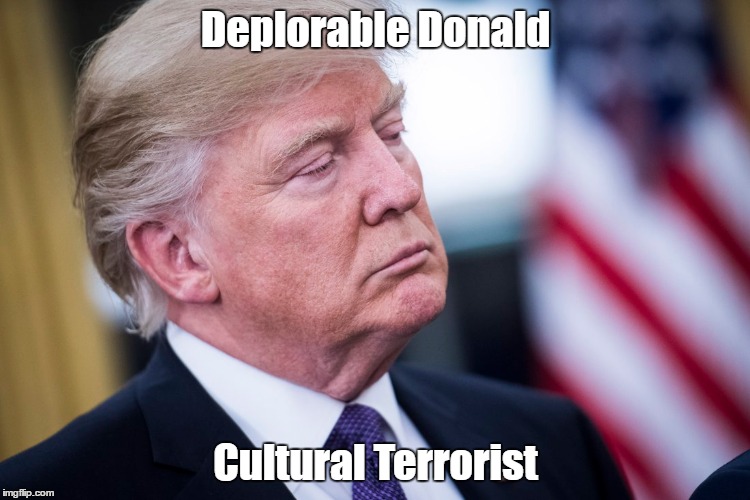
"Why Trump’s Latest Health-Care Move Is a Spiteful Act of Vandalism"
John Cassidy, The New Yorker
The Trump Administration confirmed on Friday that it is stopping, with immediate effect, billions of dollars in payments to insurers that help keep the cost of health coverage affordable for about seven million low-to-middle-income families. In a statement, the White House said that the federal government couldn’t lawfully make the payments, which are an integral part of the subsidized private-insurance markets that emerged from the Affordable Care Act.
As my colleague Amy Davidson Sorkin pointed out earlier, the Administration’s legal argument is narrow and tendentious. In reality, this is a cynical political decision, made at Donald Trump’s behest, to sabotage the workings of the A.C.A. and to endanger the welfare of millions of hardworking American families who are unable to bear the full cost of a private-insurance policy.
Unlike the executive order on health care that Trump issued on Thursday, the impact of this decision isn’t ambiguous or dependent on the way various government agencies choose to interpret its language. The new policy will go into effect straight away. Under the instruction of the Justice Department, the Department of Health and Human Services, which administers Obamacare, is stopping payments to insurers, which are known as cost-sharing reduction payments.
Under the A.C.A., insurers are obliged to limit the out-of-pocket costs—for things like co-pays and, especially, deductibles—for households earning less than two and a half times the poverty line. (For a family of four, that’s about sixty-one thousand dollars.) The cost-sharing payments, which totalled about seven billion dollars in 2016, were designed to compensate insurers for the impact on their bottom line.
By stopping the payments immediately, the White House will throw the insurance market into turmoil. Insurers had already set their rates for 2018, and the open-enrollment season begins on November 1st. In calculating the premiums they would charge, some insurers assumed that they would continue to receive the cost-sharing reduction payments. Others assumed that the payments would stop. Now all the insurers know that they won’t get the money. But, under the terms of the A.C.A., they will still be obligated to limit the out-of-pocket costs for households under the income limit. That is an intentional recipe for confusion and chaos.
In the longer term, Trump’s decision will lead to substantially higher premiums, as insurers adjust their prices to reflect the lost revenue. The Congressional Budget Office, in a recent study, estimated that premiums would rise by twenty per cent, on average, if the cost-sharing reduction payments were eliminated. In some parts of the country, the private-insurance system could collapse completely, as insurers choose to exit the market.
Clearly, this is Trump’s intention. It has been widely reported that some of his advisers tried to talk him out of making this move on the grounds that it would be highly damaging. But Trump was so infuriated by Congress’s failure to pass a bill repealing Obamacare, or large parts of it, that he chose to go ahead anyway. Repeatedly frustrated in the legislative arena, he settled on this spiteful act of diktat.
As of Friday afternoon, Trump still hadn’t offered a public defense of his decision. But earlier, in one of his early-morning tweets, he openly gloated about the damage he was causing, writing, “The Democrats ObamaCare is imploding. Massive subsidy payments to their pet insurance companies has stopped. Dems should call me to fix!” Other Administration officials have been equally heartless in their comments. “If the insurance companies want to try and raise their rates because they are no longer getting a bailout, that’s their problem,” Mick Mulvaney, the White House budget director, told reporters.
Paul Ryan and Mitch McConnell publicly supported the decision—no surprise there—but one or two elected Republican officials did cry foul. “Cutting health care subsidies will mean more uninsured in my district,” Ileana Ros-Lehtinen, a G.O.P. congresswoman from Florida, wrote on Twitter in advance of the official White House announcement. “@potus promised more access, affordable coverage. This does opposite.”
The White House’s decision to end the payments isn’t the end of the story. A group of state attorneys general have indicated that they will mount a legal challenge. And Congress could always render the legal battle moot by appropriating money for the cost-sharing reduction payments. But that would involve Republicans doing something to safeguard an important element of Obamacare, and that seems unlikely.
In any case, Trump is following the fallback strategy that he may have had in mind all along. During the campaign, he suggested that, rather than trying to repeal Obamacare, the Republicans should wait for it to collapse of its own accord and then step in. The problem with this strategy was obvious: the vast majority of the Obamacare exchanges, although they did have some problems, weren’t in any danger of collapsing. For Trump’s idea to work, somebody would have to subvert them.
That somebody turned out to be him. With his executive order encouraging the spread of cheap, unregulated insurance policies; with his Administration’s decision to slash spending on the advertising and promotion of Obamacare enrollment; and, now, with this latest premeditated act of vandalism, whose ultimate victims will include some of his own supporters, he has done all he can to bring the system crashing down around him. Even for a President with a record as dismal as his, this is a new low.
No comments:
Post a Comment